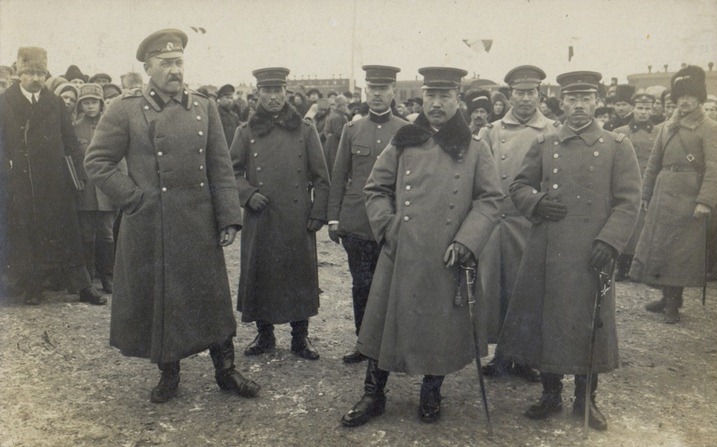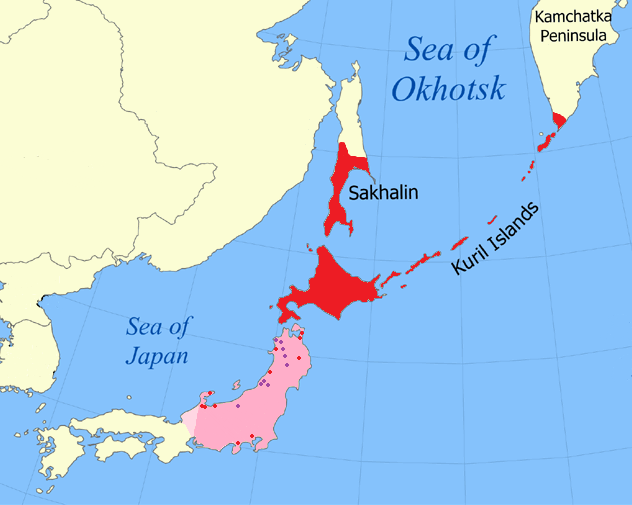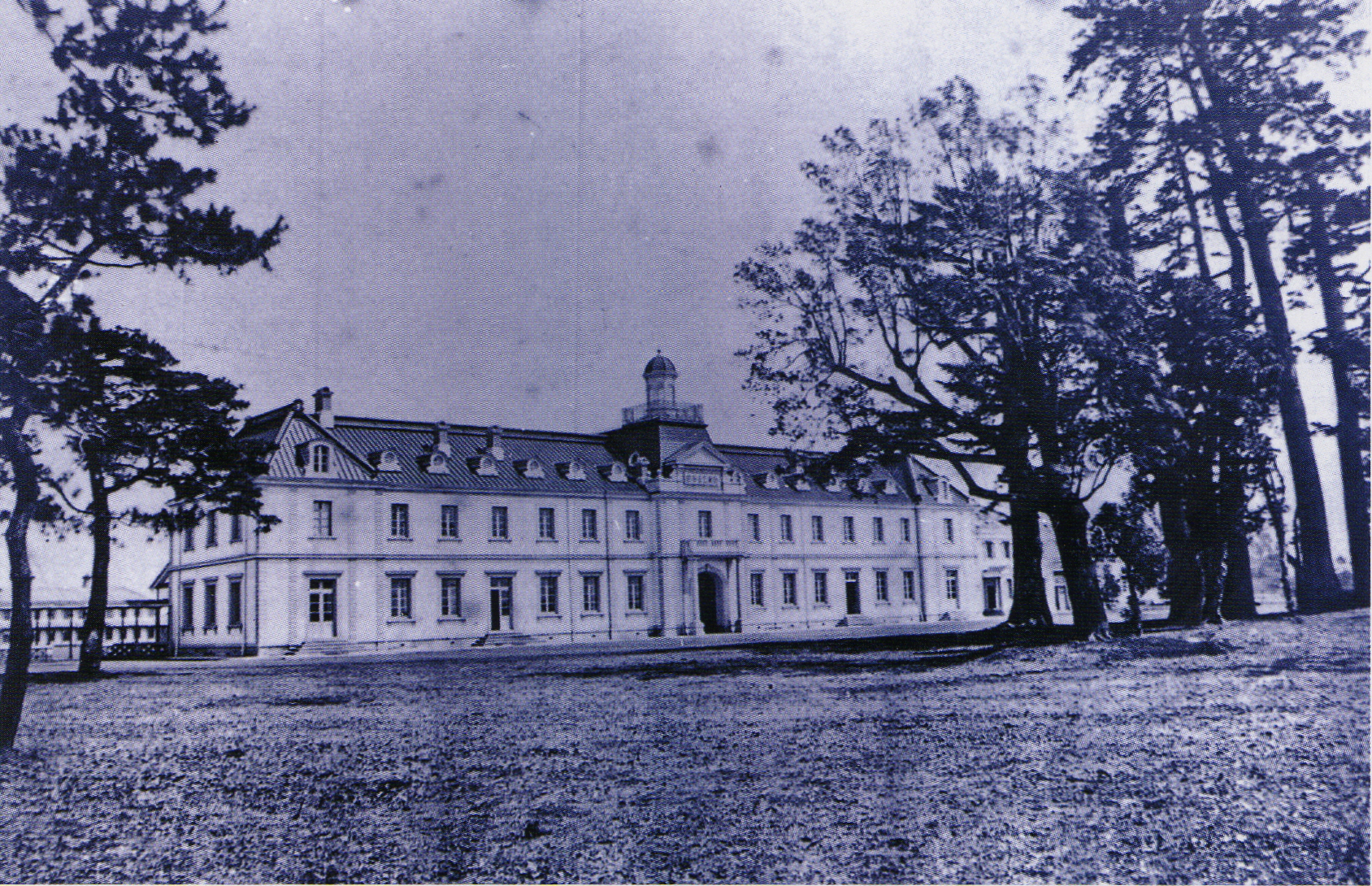|
Korechika Anami
was a general in the Imperial Japanese Army during World War II who was War Minister during the surrender of Japan. Early life and career Anami was born in Taketa city in Ōita Prefecture, where his father was a senior bureaucrat in the Home Ministry and grew up in Tokyo and in Tokushima Prefecture. He attended the 18th class of the Imperial Japanese Army Academy and was commissioned as a second lieutenant in the Infantry in December 1906. In November 1918, Anami graduated from the 30th class of the Army Staff College with the rank of captain. He was assigned to the Imperial Japanese Army General Staff from April 1919 and was promoted to major in February 1922. From August 1923 to May 1925, he was assigned to the staff of the Sakhalin Expeditionary Army, which was responsible for the occupation of northern Sakhalin island during the Japanese intervention in Siberia. Anami was promoted to lieutenant colonel in August 1925. From August to December 1925, Anami was sen ... [...More Info...] [...Related Items...] OR: [Wikipedia] [Google] [Baidu] |
Ministry Of War Of Japan
The , also known as the Ministry of War, was the Cabinet (government), cabinet-level ministry in the Empire of Japan charged with the administrative affairs of the Imperial Japanese Army (IJA). It existed from 1872 to 1945. In the IJA and the Imperial Japanese Navy (IJN), the ministries were in charge of ''Gunsei'' (軍政, military administration), and Imperial Japanese Army General Staff Office, Army General Staff Office and Imperial Japanese Navy General Staff, Navy General Staff were in charge of ''Gunrei'' (軍令, military command). The two were distinguished. History The Army Ministry was created in April 1872, along with the Ministry of the Navy (Japan), Navy Ministry, to replace the of the early Government of Meiji Japan, Meiji government. Initially, the Army Ministry was in charge of both administration and operational command of the Imperial Japanese Army. However, with the creation of the Imperial Japanese Army General Staff Office in December 1878, it was left wit ... [...More Info...] [...Related Items...] OR: [Wikipedia] [Google] [Baidu] |
Seppuku
, also known as , is a form of Japanese ritualistic suicide by disembowelment. It was originally reserved for samurai in their code of honor, but was also practiced by other Japanese people during the Shōwa era (particularly officers near the end of World War II) to restore honor for themselves or for their families. As a samurai practice, ''seppuku'' was used voluntarily by samurai to die with honor rather than fall into the hands of their enemies (and likely be tortured), as a form of capital punishment for samurai who had committed serious offenses, or performed because they had brought shame to themselves. The ceremonial disembowelment, which is usually part of a more elaborate ritual and performed in front of spectators, consists of plunging a short blade, traditionally a '' tantō'', into the belly and drawing the blade from left to right, slicing the belly open. If the cut is deep enough, it can sever the abdominal aorta, causing death by rapid exsanguination. One ... [...More Info...] [...Related Items...] OR: [Wikipedia] [Google] [Baidu] |
Japanese Intervention In Siberia
The of 1918–1922 was a dispatch of Japanese military forces to the Russian Maritime Provinces, as part of a larger effort by western powers and Japan to support White Russian forces against the Bolshevik Red Army during the Russian Civil War. The Japanese suffered 1,399 killed and another 1,717 deaths from disease. ''World War I: A Student Encyclopedia''. p.969. Japanese military forces occupied Russian cities (largest city Vladivostok) and towns in the province of Primorsky Krai between 1918 and 1922. Background On August 23, 1914, the Empire of Japan declared war on Germany, in part due to the Anglo-Japanese Alliance, and Japan became a member of the Entente powers. The Imperial Japanese Navy made a considerable contribution to the Allied war effort; however, the Imperial Japanese Army was more sympathetic to Germany, and aside from the seizure of Qingdao, resisted attempts to become involved in combat. The overthrow of Tsar Nicholas II and the establishment of a Bo ... [...More Info...] [...Related Items...] OR: [Wikipedia] [Google] [Baidu] |
Sakhalin
Sakhalin ( rus, Сахали́н, p=səxɐˈlʲin) is an island in Northeast Asia. Its north coast lies off the southeastern coast of Khabarovsk Krai in Russia, while its southern tip lies north of the Japanese island of Hokkaido. An island of the West Pacific, Sakhalin divides the Sea of Okhotsk to its east from the Sea of Japan to its southwest. It is administered as part of Sakhalin Oblast and is the largest island of Russia, with an area of . The island has a population of roughly 500,000, the majority of whom are Russians. The indigenous peoples of the island are the Ainu, Oroks, and Nivkhs, who are now present in very small numbers. The island's name is derived from the Manchu word ''Sahaliyan'' (), which was the name of the Qing dynasty city of Aigun. The Ainu people of Sakhalin paid tribute to the Yuan, Ming, and Qing dynasties and accepted official appointments from them. Sometimes the relationship was forced but control from dynasties in China was loose ... [...More Info...] [...Related Items...] OR: [Wikipedia] [Google] [Baidu] |
Major (rank)
Major is a senior military Officer (armed forces), officer military rank, rank used in many countries. When used unhyphenated and in conjunction with no other indicators, major is one rank above Captain (land), captain in armies and air forces, and one rank below lieutenant colonel. It is considered the most junior of the senior officer ranks. Background Etymologically, the word stems from the Latin word meaning "greater". The rank can be traced back to the rank of sergeant major general, which was shortened to sergeant major, and subsequently shortened to ''major''. When used in hyphenated or combined fashion, the term can also imply seniority at other levels of rank, including major general, denoting a low-level general officer, and sergeant major, denoting the most senior non-commissioned officer (NCO) of a military unit. The term major can also be used with a hyphen to denote the leader of a military band such as in Pipe-Major, pipe-major or drum-major. Links to major ... [...More Info...] [...Related Items...] OR: [Wikipedia] [Google] [Baidu] |
Imperial Japanese Army General Staff
The , also called the Army General Staff, was one of the two principal agencies charged with overseeing the Imperial Japanese Army (IJA). Role The was created in April 1872, along with the Navy Ministry, to replace the Ministry of Military Affairs (''Hyōbushō'') of the early Meiji government. Initially, the Army Ministry was in charge of both administration and operational command of the Imperial Japanese Army however, from December 1878, the Imperial Army General Staff Office took over all operational control of the Army, leaving the Army Ministry only with administrative functions. The Imperial Army General Staff was thus responsible for the preparation of war plans; the military training and employment of combined arms military intelligence; the direction of troop maneuvers; troop deployments; and the compilation of field service military regulations, military histories, and cartography. The Chief of the Army General Staff was the senior ranking uniformed officer in the I ... [...More Info...] [...Related Items...] OR: [Wikipedia] [Google] [Baidu] |
Army War College (Japan)
The ; Short form: of the Empire of Japan was founded in 1882 in Minato, Tokyo to modernize and Westernize the Imperial Japanese Army. Much of the empire's elite including prime ministers during the period of Japanese militarism were graduates of the college. History Supported by influential pro-German ministers and army officers, the Army War College was modeled after the Prussian '' Preußische Kriegsakademie'', with German officers hired as Oyatoi gaikokujin to provide training. The most prominent of these instructors was Major Klemens W.J. Meckel. He was influential in assisting in the reorganization of the standing army from a garrison-based system into a divisional system. Reporting directly to the Imperial Japanese Army General Staff Headquarters, the college specialized initially in teaching tactics, and was regarded as the pinnacle of the Army educational system. For this reason, it accepted only previous graduates of the Imperial Japanese Army Academy who had at ... [...More Info...] [...Related Items...] OR: [Wikipedia] [Google] [Baidu] |
Infantry
Infantry, or infantryman are a type of soldier who specialize in ground combat, typically fighting dismounted. Historically the term was used to describe foot soldiers, i.e. those who march and fight on foot. In modern usage, the term broadly encompasses a wide variety of subspecialties, including light infantry, irregular infantry, heavy infantry, mountain infantry, motorized infantry, mechanized infantry, Airborne forces, airborne infantry, Air assault, air assault infantry, and Marines, naval infantry. Other subtypes of infantry, such as line infantry and mounted infantry, were once commonplace but fell out of favor in the 1800s with the invention of more accurate and powerful weapons. Etymology and terminology In English, use of the term ''infantry'' began about the 1570s, describing soldiers who march and fight on foot. The word derives from Middle French , from older Italian (also Spanish) ''infanteria'' (foot soldiers too inexperienced for cavalry), from Latin '' ... [...More Info...] [...Related Items...] OR: [Wikipedia] [Google] [Baidu] |
Imperial Japanese Army Academy
The was the principal officer's training school for the Imperial Japanese Army. The programme consisted of a junior course for graduates of local army cadet schools and for those who had completed four years of middle school, and a senior course for officer candidates. History and background Established as the ''Heigakkō'' in 1868 in Kyoto, the officer training school was renamed the Imperial Japanese Army Academy in 1874 and relocated to Ichigaya, Tokyo. After 1898, the Academy came under the supervision of the Army Education Administration. In 1937 the Academy was divided, with the Senior Course Academy being relocated to Sagamihara in Kanagawa prefecture, and the Junior Course School moved to Asaka, Saitama. The 50th graduation ceremony was held in the new Academy buildings in Sagamihara on 20 December 1937, and was attended by the Shōwa Emperor (Emperor Hirohito) himself. In 1938, a separate school was established for military aviation officers. During World War II, the sc ... [...More Info...] [...Related Items...] OR: [Wikipedia] [Google] [Baidu] |
Tokushima Prefecture
is a Prefectures of Japan, prefecture of Japan located on the island of Shikoku. Tokushima Prefecture has a population of 682,439 (1 February 2025) and has a geographic area of 4,146 Square kilometre, km2 (1,601 sq mi). Tokushima Prefecture borders Kagawa Prefecture to the north, Ehime Prefecture to the west, and Kōchi Prefecture to the southwest. Tokushima, Tokushima, Tokushima is the capital and largest city of Tokushima Prefecture, with other major cities including Anan, Tokushima, Anan, Naruto, Tokushima, Naruto, and Yoshinogawa, Tokushima, Yoshinogawa. Tokushima Prefecture is located on the Kii Channel, connecting the Pacific Ocean and Seto Inland Sea, across from Wakayama Prefecture on the Kii Peninsula of the island of Honshu. Tokushima Prefecture is connected to Awaji Island across the Naruto Strait by the Ōnaruto Bridge as part of the Kobe-Awaji-Naruto Expressway, connecting the prefecture to the city of Kobe and the San'yō Expressway on Honshu. History Until ... [...More Info...] [...Related Items...] OR: [Wikipedia] [Google] [Baidu] |
Home Ministry (Japan)
An interior ministry or ministry of the interior (also called ministry of home affairs or ministry of internal affairs) is a government department that is responsible for domestic policy, public security and law enforcement. In some states, the interior ministry is entrusted with the functions of ensuring national security, immigration issues and protecting places of detention. Structurally, an interior ministry is part of the highest bodies of executive power and reports directly to the head of government. In states with a federal structure, the ministry often has branches at the level of states or federal subjects. Lists of current interior ministries Named "ministry" * Ministry of Internal Affairs (Adygea) * Ministry of Interior Affairs (Afghanistan) * Ministry of Internal Affairs (Albania) * Ministry of Internal Affairs (Altai Republic) * Ministry of the Interior (Argentina) * Ministry of the Interior (Austria) * Ministry of Internal Affairs (Azerbaijan) * Minist ... [...More Info...] [...Related Items...] OR: [Wikipedia] [Google] [Baidu] |







